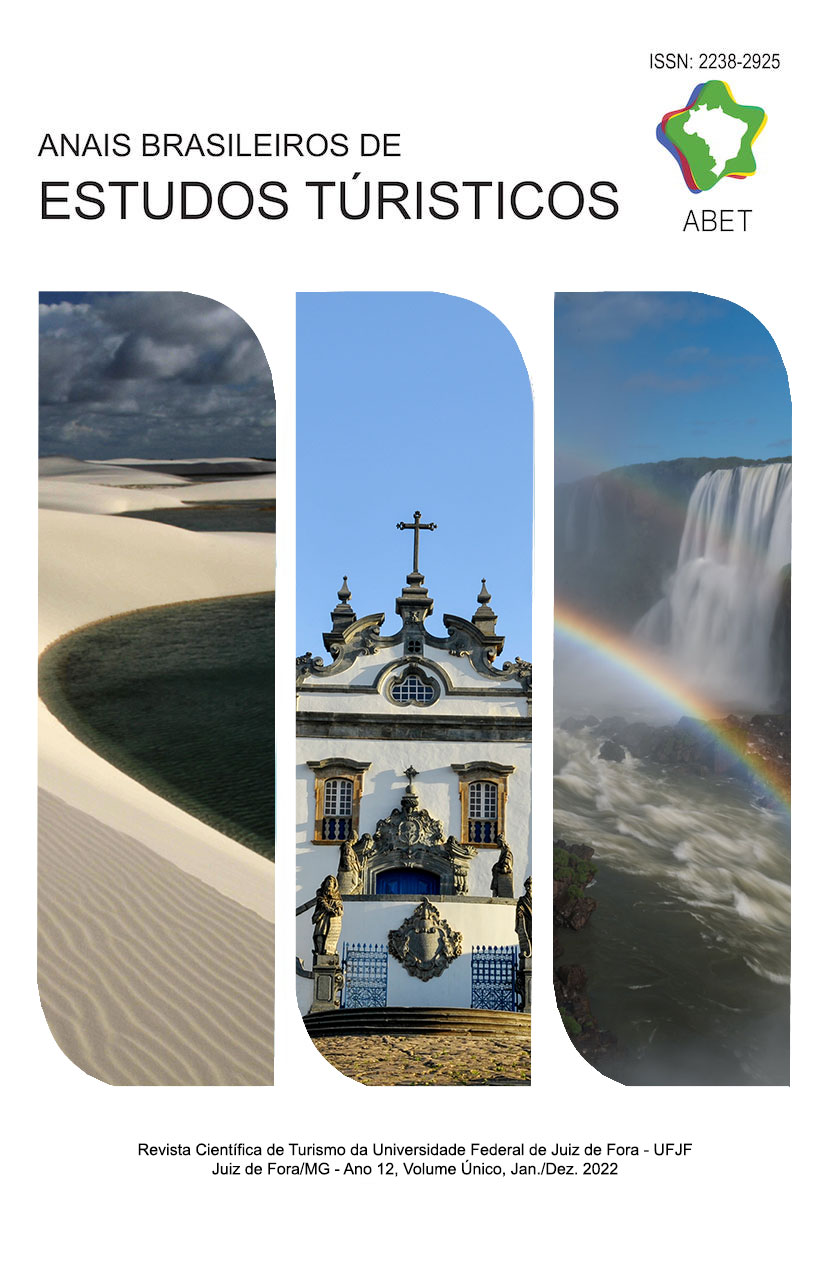Geotourism Perception by Ouro Preto (Brazil) World Heritage Site Managers
DOI:
https://doi.org/10.5281/zenodo.7262455Keywords:
World Heritage, Tourist Heritage, Tourist, Geotourism, Management of tourist destinationsAbstract
The historic city of Ouro Preto was the first Brazilian heritage site recognized by Unesco, especially for cultural criteria. The city and its surroundings have a rich cultural and natural heritage, which can be further explored by geotourism, interpreting abiotic aspects, such as relief and rocks. In this sense, the objective of the research was to aim to understand the perception of geotourism by managers of the Ouro Preto heritage. The methodology took place in office and field stages. In the first one, there was a bibliographic and digital review and documental research, elaboration of a data collection instrument (structured qualitative and quantitative forms). In the second, remote interview application by Google Meet to a focus group of heritage managers in Ouro Preto. The results found demonstrate: that the offer of commercialized tourist attractions has geotourism potential; and that geotourism is still a poorly understood concept, with great emphasis on cultural heritage (and cultural tourism), and when natural heritage is associated with ecotourism and natural protected areas. It is concluded that there is a need for greater training in geotourism for the social actors responsible for heritage decision-making.
Downloads
Downloads
Published
How to Cite
Issue
Section
License
Copyright (c) 2022 Anais Brasileiros de Estudos Turísticos

This work is licensed under a Creative Commons Attribution 4.0 International License.
This journal provides immediate open access to its content, following the principle that providing free scientific knowledge to the public provides greater democratization of world knowledge.
Authors must agree to the following terms relating to copyrights:
(a) Authors keep all copyright and grant the to the journal the right of first publication, with the work simultaneously licensed under the Creative Commons Attribution License that allowing job sharing with recognition of authorship of the work and initial publication in this journal.
(b) Authors are allowed to assume additional contracts separately, for non-exclusive distribution of the version of the work published in this journal (e.g. publish in institutional repository or book chapter), with recognition of authorship and initial publication in this magazine.
(c) Authors are allowed and are encouraged to publish and distribute their work online (e.g. in institutional repositories or on your personal page) since they do not do this before or during the editorial process, as this can generate productive interchange, as well as increase the impact and citation of work aired. (See Effect of Free Access).















